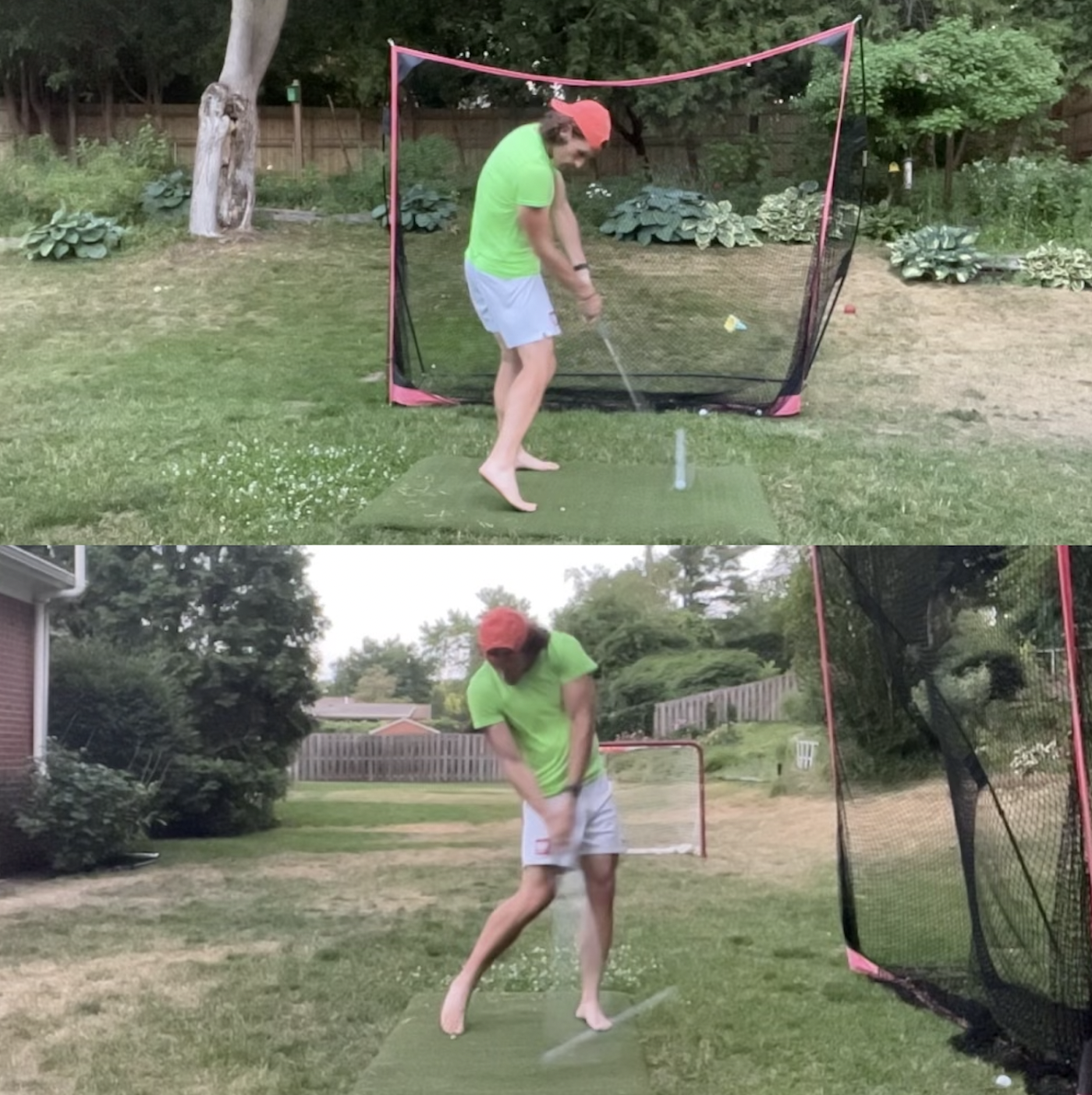Game Improvement
GAME IMPROVEMENT: Chasing the High of a Golf Swing Epiphany

GRAND RAPIDS, Mich. — For some people, the primary appeal of golf is the competition. About beating your buddies, or beating the best.
For others, it’s about camaraderie, relaxing with friends, maybe having a few drinks and a few more laughs with people they enjoy.
And for those outdoors enthusiasts, golf could be the most perfect marriage of sport and nature. Playing around (or a round) on a grassy playground just seems right, doesn’t it?
But as far as my attachment to the game goes, the most exhilarating part of it is figuring it out.
Anyone who’s played golf for any length of time knows what I’m talking about. Figuring it out means searching for — or stumbling upon — that eureka, that a-ha, that epiphany that takes your ball-striking to the next level.
Even if that next level is simply getting the ball consistently in the air, or within 20 yards of your intended target line, improvement is improvement. It’s oxygen for the avid golfer. But, some days you’re at sea level, and some days you’re gasping for breath on Mount Everest.
Ben Hogan famously said you have to “dig it out of the dirt.” With apologies to my instructor friends and those ubiquitous social-media swing influencers, I think for the most part that’s true. I’ve found my longest-lasting and most satisfying moments of clarity have arisen while I’m putting the work in on my own. Golf can be the loneliest game, but that often isn’t a bad thing.
Again, I think getting another set of eyes, or even the camera on your phone, on your mechanics can be incredibly insightful, but there’s no replacement for feeling your way through a rough patch, one swing at a time.
I recently experienced a renewal of that exhilarating feeling last week in my backyard. While I make it a point to regularly hit balls either at a driving range down the road or the indoor simulator space where I train clients, I also have a rudimentary setup a few steps from our porch.
It consists of a net and a piece of artificial turf, and its purpose is to make it as easy as possible to get in at least a few swings per day. Betcha can’t hit just one!
Of course, you can’t tell everything from just the feeling of impact … but you can tell a great deal. I reckon that for most amateurs, finding the center of the clubface more often that not should be the predominant goal of any full-swing practice session. What else is more important? If you’re hitting the ball flush, you will have consistent distance control and I’m betting your accuracy is going to be pretty darn good, too.
So, anyway, I’ve gotten quite a bit out of hitting into a net, going back to when my dad installed a couple of steel poles in our backyard so I could get my fix as a golf-crazy teenager. There’s something freeing about not needing to track the ball and simply honing in on that moment of truth.
Speaking of my early years, I developed an interesting swing thought during a marathon net session maybe 20 years ago: Chin up.
You might ask what your chin has to do with the golf swing. Well, when you have a chin as large as mine, it tends to get in the way of things. That includes the shoulder turn during my swing, as it turns out.

Visual proof of my abnormally-large chin. Not quite Jay Leno, but close. (JILLIAN GAJTKA)
As you probably know, turning one’s shoulders is a rather important part of playing good golf, affecting everything from clubhead speed to technical consistency. More to the point, though, is the fact that keeping one’s head steady during the turn has been proven to be a key determining factor in ball-striking ability.
I’ve found that — based on both feel and video review — that when my chin is close to my chest, I can’t reliably complete my naturally-long backswing without my head (and eye level) moving a few inches upward and backward from where it was at address.
If I get my chin up, look at the ball by adjusting my gaze downward, and turn my shoulders ‘under’ my chin, it’s amazing how much freer and faster my swing seems.
(Why I keep forgetting this is a great question, but I’m hoping that writing this post gives this personal fundamental a permanent place in my golfing mind!)
When I say that keeping my chin up solves many ills, I’m probably understating it. As I’ve focused on speed training over the past two years, I’ve noticed I usually have a hard time getting my weight onto my front (left) foot early enough in the downswing to promote optimal power development.
Well, after making the aforementioned chin-height adjustment, I suddenly found I had no issues getting onto my front side, because I was getting weight into my trail (right) side much more easily now that my shoulders could move more efficiently.
I wish I could adequately describe the sensation of that moment. What once felt manufactured and restricted transformed into something breezy and athletic. It felt easier to make good contact than bad, which is where any golfer wants to be.
Obviously, I know that the high of discovery can’t last forever. Movement patterns have a way of creeping back toward ingrained habits, et cetera, et cetera. I absolutely smoked the ball during a Sunday nine with my neighbor, but I’ll have to stay vigilant if I want this to last more than a week or so.
But if I can’t allow myself to get excited about the euphoria of a golf swing epiphany, I might as well sell my clubs.
This is why I play: To again unlock the secrets of pure, hard contact. All the rest is filler.
Matt Gajtka is an NASM-certified golf fitness specialist and the editor-in-chief of Pittsburgh Golf Now, even though he now lives in Michigan. Contact him at matt.gajtka@gmail.com for story ideas, or if you want to become a more powerful, resilient golfer!













